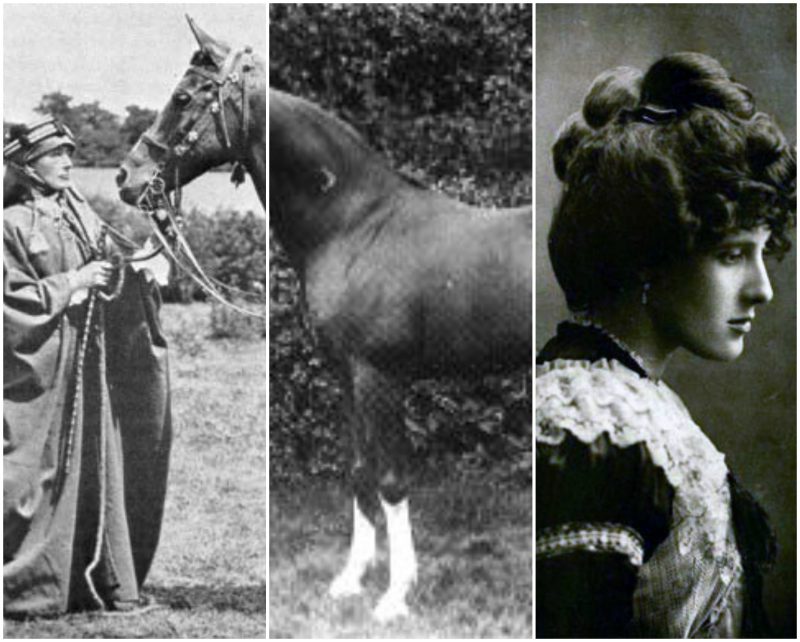Lord Byron’s granddaughter, Lady Anne Blunt, the prominent horse breeder, was also known as “the noble lady of the horses”. She is famous for breeding the aristocratic Crabbet Arabian Horse. Her passion and tireless work had an impact so influential that many Arabian horses today have a Crabbet ancestor in the gene pool.
Born on the 22nd September in 1837 as Anne Isabella Noel Blunt, 15th Baroness Wentworth. She was the daughter of the famous mathematician Ada Lovelace and William King. Along with her husband Wilfrid Scawen Blunt, she is responsible for the noble Crabbet Arabian horse. A keen artist, traveler and skilled in the equine trade of horse breeding, she kept records, notes and illustrations of her work, which are now held in the British Library.
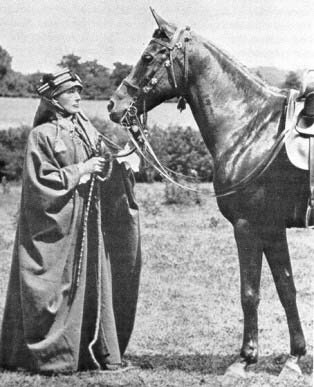
She was 15 when her mother died. Her father took up the difficult upbringing where he took her on many travels, quickly learning new languages and sketching landscapes along the way. During her childhood travels, her love for horses grew, cementing her passion in the future. Lady Anne was a skilled painter and took classes along with John Ruskin, who would later become a prominent art critic in the Victorian era.
She was an avid violin player as well, and she owned a violin made by Stradivarius that was named after her. Even though she was not the original owner, the violin was refurbished in 1864 by Jean-Baptiste Vuillaume. It was purchased from Vuillaume, after being recommended by Leopold Jansa, her instructor.
![This violin was sold at auction by Sotheby's in 1971 for the then-record amount of £84,000 by Robert Lowe, who owned the violin for nearly 30 years.[3] (US$200,000).[4] In 2008 it was sold to the Nippon Music Foundation for over US$10 million in a private transaction.[5] The Lady Blunt was sold by Tarisio Auctions on their 20 June 2011 online auction for £9.8 million (US$15.9 million),[3] more than four times the previous auction record for a Stradivarius, held by the Molitor when it sold for US$3.6 million in 2010.[6] The proceeds will go to the Nippon Foundation's Northeastern Japan Earthquake and Tsunami Relief Fund.[7] When it went up for sale it was called "the best-preserved Stradivarius to be offered for sale in the past century."[7] Photo Credit](https://www.thevintagenews.com/wp-content/uploads/sites/65/2016/10/386px-Lady_Blunt_top-274x640.jpg)
She met her future husband Wilfrid Blunt while on the travels and they married in 1869. Their marriage was not very happy during those times. They had four children, but only one child, Judith Blunt-Lytton, survived into adulthood. Never coping with the miscarriages and grief, Lady Anne obsessively focused on her work. In 1872, she inherited an estate in Sussex where she built the Crabbet Park breeding farm with her husband.
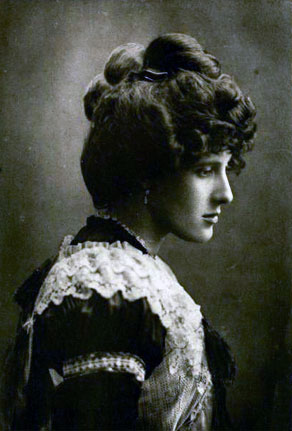
The couple traveled across Europe and the Middle East. They bought Arabian horses from Bedouin tribes and the Egyptian Ali Pasha Sherif, who was also a renowned horse breeder himself. Various breeds such as Azrek, Dajania, Queen of Sheba, and the Ali Pasha Sherif stallion, Mesaoud, were taken to England. The purebred Arabian breeds are solely responsible for the Crabbet ancestry found in today’s horses.
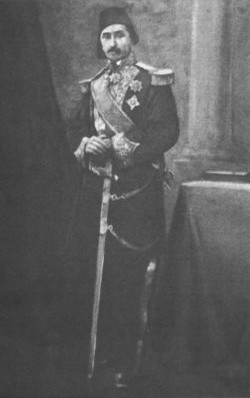
The diaries and notes that Anne wrote reveal their travels across the deserts contain well-written critique and characterization. Her notes were used in her daughter Judith’s diary, “The Authentic Arabian Horse”, in 1945. The equestrian Lady certainly had a good eye for confirmation and has proven to be an avid breeder during their pilgrimage across the Middle East. In 1882, they opened a second stable, the Shaykh ‘Ubayd, in 1882 just outside Cairo. By now, she was fluent in Arabic and the culture had a profound impact on her. She happily accepted the foreign customs and would often dress in middle eastern clothing, much to her husband’s disagreement.
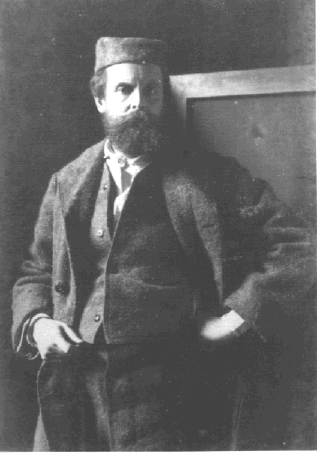
Lady Anne and Wilfrid Blunt often had quarrels over management of their horses. Her husband, the more political one, stuck to his theory that with its cold and relentless weather, England was no place for the noble Arabian horses. Wilfrid had many mistresses, such as Dorothy Carleton, whom Anne despised. Expressing her dismay towards her husband’s polygamous “oriental lifestyle”, Lady Anne was not pleased. Consequently, the marriage did not last.
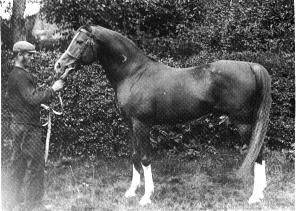
When Dorothy Carleton moved into the house, the unhappy couple were legally separated in 1906. Lady Blunt went to live with her daughter and son-in-law near Crabbet Park. They would spend the winters in Shaykh ‘Ubayd. After many unnecessary legal disputes and quarrels, Lady Blunt died in Cairo in 1917. Judith Blunt-Lytton needed to repossess the inheritance and had to directly buy back most of it, because of Wilfrid’s spiteful legal obstacles. She bought back most of the horses, along with the farms and houses.
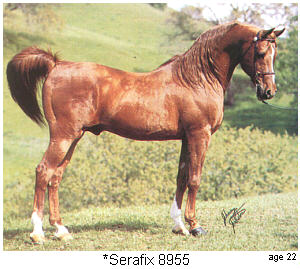
Judith heeded her father’s “desert conditions” theory and her management was efficient. The supposed breeding method showed productivity and quality. As a result, the Polish-bred Arabian stallion Skowronek was introduced. Despite some controversy over breed purity, the Skowronek lived up to Crabbet’s nobility. Judith sold horses throughout the world and the stud farm prospered until 1971, when a motorway was built on the property.
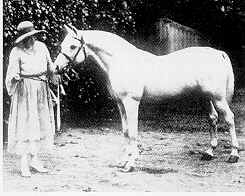
Sadly, the purity of the Crabbet breed dispersed throughout the ages. Then again, there are many breeders that continue to preserve and keep the gene pool of Crabbet horses. Modern studs are known for Crabbet breeding, such as the Al-Marah including Al-Marah in America and the Australian Fenwick. Today, over 90% of Arabian horses in the United States contain one or more bloodlines to the Crabbet Stud. Either way, Lady Anne’s contribution to this equine profession kept it’s noble legacy to this day.
